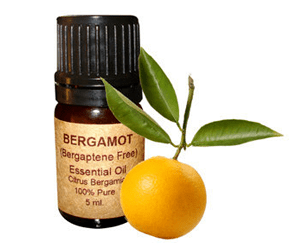 | ||
Similar Bergamot orange, Clary, Lemongrass, Peppermint, Juniper berry | ||
Bergamot essential oil for emotions hormones cooking for must have monday
Bergamot essential oil is a cold-pressed essential oil produced by cells inside the rind of a bergamot orange fruit. It is a common top note in perfumes.
Contents
- Bergamot essential oil for emotions hormones cooking for must have monday
- Bergamot essential oil benefits kill candida treat cold sores cure uti s
- Production
- Constituents
- Volatile fraction
- Non volatile fraction
- Adulteration
- Reference analytical values
- Toxicology
- References
Bergamot essential oil is a major component of the original Eau de Cologne composed by Farina at the beginning of the 18th century. The first record of bergamot oil as a fragrance ingredient is from 1714, found in the Farina Archive in Cologne. One hundred bergamot oranges will yield about three ounces (85 grams) of bergamot oil. The scent of bergamot essential oil is similar to a sweet light orange peel oil with a floral note.
"Earl Grey tea" is a type of black tea that contains bergamot essential oil as a flavouring.
Bergamot essential oil benefits kill candida treat cold sores cure uti s
Production
The sfumatura or slow-folding process was the traditional technique for manually extracting the bergamot oil.
Today the oil is extracted mechanically with machines called "peelers", these machines "scrape" the outside of the fruit under running water to get an emulsion channeled into centrifuges for separating the essence from the water.
Constituents
A clear liquid (sometimes there is a deposit consisting of waxes) in color from green to greenish yellow, bergamot essential oil consists for the most part (average 95%) of a volatile fraction and for the remaining (5%) of a non-volatile fraction (or residual). Chemically it is a highly complex mixture of many classes of organic substances, particularly for the volatile fraction terpenes, esters, alcohols and aldehydes, and for the non-volatile fraction, oxygenated heterocyclic compounds as coumarins and furanocoumarins.
Volatile fraction
The main compounds in the oil are limonene, linalyl acetate, linalool, γ-terpinene and β-pinene, and in smaller quantities geranial and β-bisabolene.
Linalyl acetate and linalool are qualitatively the most important components of the bergamot oil.
Non-volatile fraction
The main compounds are coumarins (citropten, 5-geranyloxy-7-methoxycoumarin) and furanocoumarins (bergapten, bergamottin).
Adulteration
The bergamot essential oil is particularly subject to adulteration being an essential oil produced in relatively small quantities. Generally adulteration is to "cut" the oil, i.e. adding distilled essences of poor quality and low cost, for example of bitter orange and bergamot mint and/or mixtures of terpenes, natural or synthetic, or "reconstruct" the essence from synthetic chemicals, coloring it with chlorophyll. Worldwide, each year, around three thousand tonnes of declared essence of bergamot are marketed, while the genuine essence of bergamot produced annually amounts to no more than one hundred tons.
Gas chromatography with columns having a chiral stationary phase allows to analyze mixtures of enantiomers. The analysis of the enantiomeric distribution of various compounds, such as linalyl acetate and linalool, allows the characterization of the bergamot oil according to the manufacturing process and allows for the detection of possible adulteration.
The combined use of isotope ratio mass spectrometry and SNIF-NMR (Site-Specific Natural Isotope Fractionation-Nuclear Magnetic Resonance) allows to discover adulteration otherwise undetectable even allowing for the identification of the geographical origin of the essential oil.
The GC-C-IRMS (Gas Chromatography-Combustion – Isotope Ratio Mass Spectrometer) technique, the most recently used, allows to obtain similar results.
Reference analytical values
Analytical values take as reference for genuinity evalutation of bergamot essential oil by the Experimental Station for the Industry of the Essential oils and Citrus products, in Reggio Calabria, Italy.
Toxicology
In several studies, application of some sources of bergamot oil directly to the skin via patch test was shown to have a concentration-dependent phototoxic effect of increasing redness after exposure to ultraviolet light (due to the chemical bergapten, and possibly also citropten, bergamottin, geranial, and neral). This is a property shared by many other citrus fruits. Bergapten has also been implicated as a potassium channel blocker; in one case study, a patient who consumed four liters of Earl Grey tea per day suffered paresthesias, fasciculations and muscle cramps.
